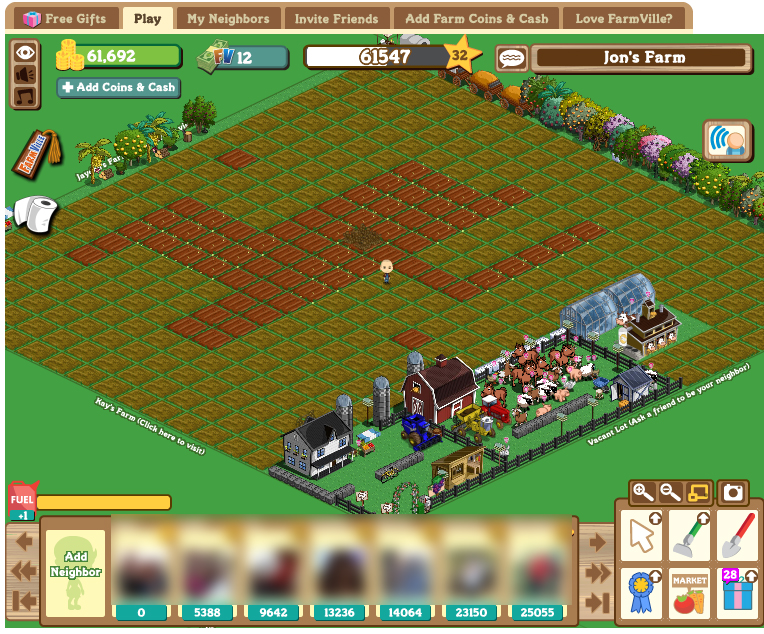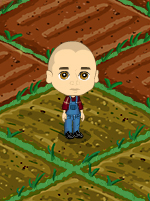I have a rather embarrassing confession to make, but I want to admit it before someone else calls me on it. During the last half of 2009, I was seriously addicted to Farmville. There is no excuse, but in all fairness, it happened during the holiday season, when my freelance work in Second Life and OpenSim had slowed down (as it always does around that time of the year), and I became a virtual farmer. I farmed. And farmed… And farmed… I had to keep up with my cousin, and at one point I even deleted and replanted crops just so I could score more points and keep up the ridiculous chase.
Now I won’t go so far as to call out my neighbors, because there are some familiar faces on my neighbors list who may not yet be ready to admit to their seed planting, barn building, crop fertilizing ways. But I want them all to know that there is a light at the end of the Farmville tunnel.. all you have to do is let those precious crops whither. That’s right.. just go ahead and let those big, fresh, ripe pumpkin crops you invested in last week whither and die – no matter the cost, because there is no other way out.
My final harvest was in early January, when metaverse consulting gigs kicked back into gear. Returning to my senses, I let those fallow plots sit idle. They still continue to sparkle with bling from obsessive fertilization from my Farmville neighbors (who have yet to let go), yet the crops remain fallow.
Then along came CADville.
“CADVille is the first in a line of cloud based Social Product Games ™ where you can design with your friends. Each player is given a 12x12x12 volume of space in which to set up his or her design studio and create products to sell or trade. Over time, you can further expand and improve your design space.”
Though I love gardening – I am no farmer. However, I have been drafting in CAD for almost as long as I can remember. As soon as I discovered CADville, a new social media game built on Facebook that works similar to Farmville, I was immediately hooked, and was lucky enough to get accepted in their early testing group in mid-February. I quickly climbed the level ladder, and made lots of new CAD neighbors along the way. I talked to Mark Burhop, who led the CADville release, who had this to say about it,
“You begin with a fixed number of primitives such as cubes, spheres and cylinders. As you advance in the game, you can “unlock” new tools (e.g. “Boolean subtract”) and new primitives (e.g. swept surfaces). Your friends can add their own studios next to you and you are able to use the arrow keys to walk over and see their work. You can even give them gifts like exotic rounds, champers, and threaded holes. Or, you can trade your products at the community market.”
What’s even more exciting is that I’ve heard that there will soon be industry-specific CADville-Architecture released later this year, where 50% of the proceeds are donated to Architecture for Humanity. You may even be able to earn money by helping people solve CAD related problems, with their new ‘Solver’ tokens.
“We are currently expanding the CADVille API to support the creation and trading of elements, nodes, and Solver tokens (good for 1 minute of solve time).”
Better yet, if you want to engage the CADville community to answer your tough AEC-related questions, but can’t get permission from your manager to play CADville or haven’t earned enough Solver tokens to ask your question, you’re in luck. You can still use a credit card to purchase Solver tokens – which will be billed as ‘Collaboration Tool’ to help avoid any confusion on expense reports.
Read more about this exciting project on the Siemens PLM Software Blog here: http://siemens.pmhclients.com/index.php/site/comments/the-future-of-cad-and-social-media-is-here/
This isn’t just the future of CAD, this is April Fool’s day!




